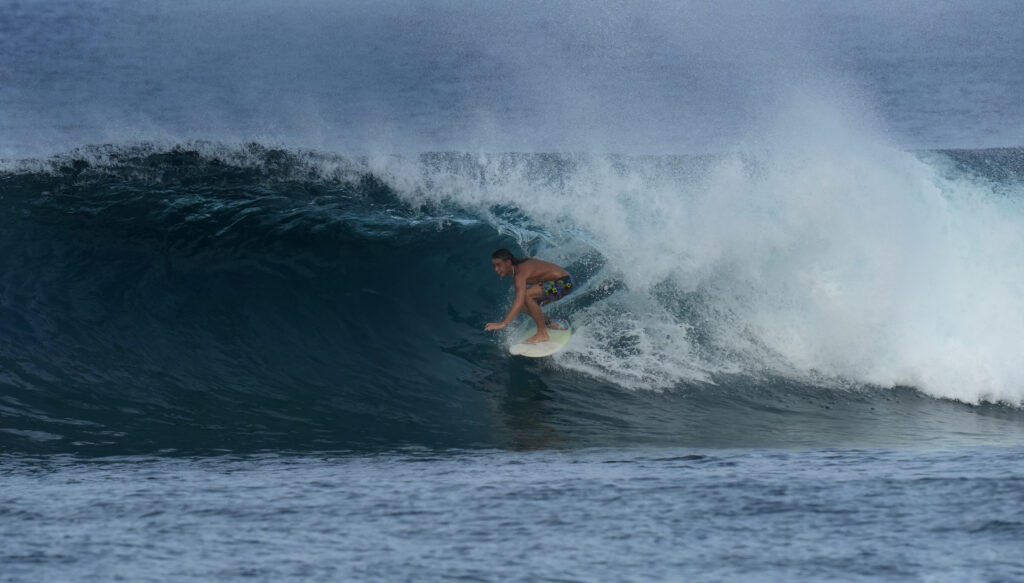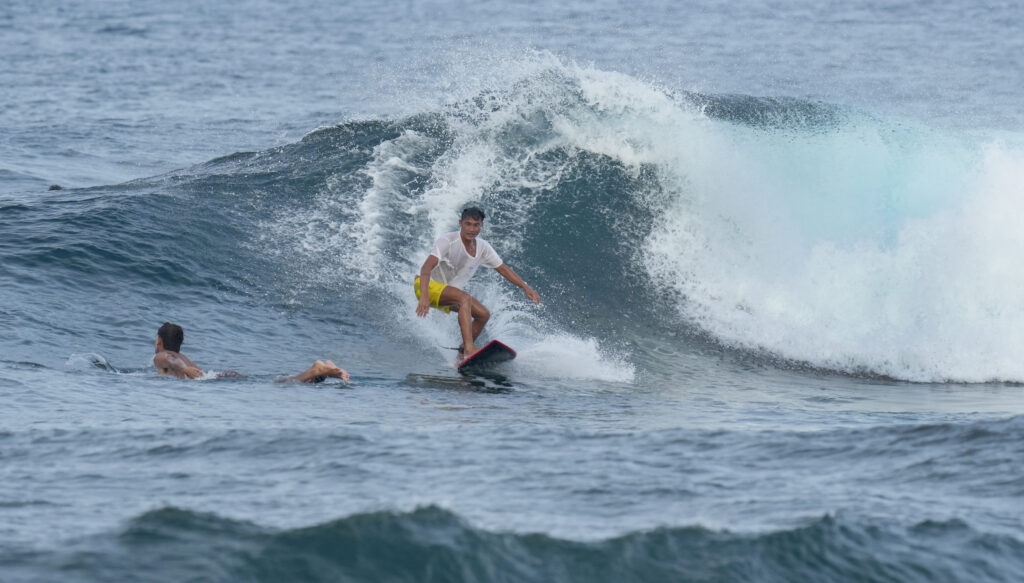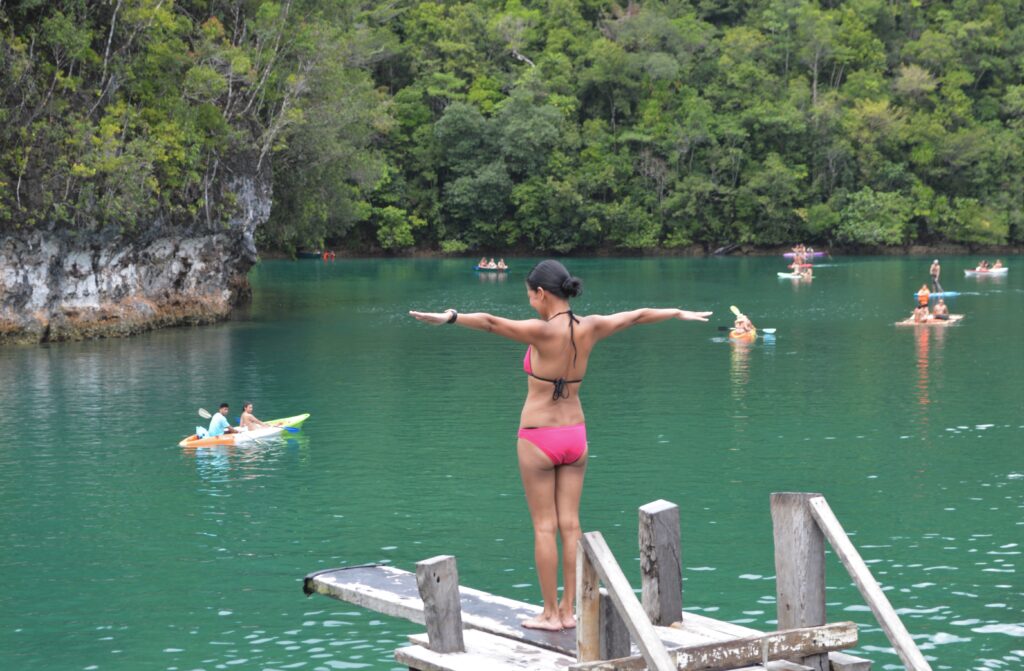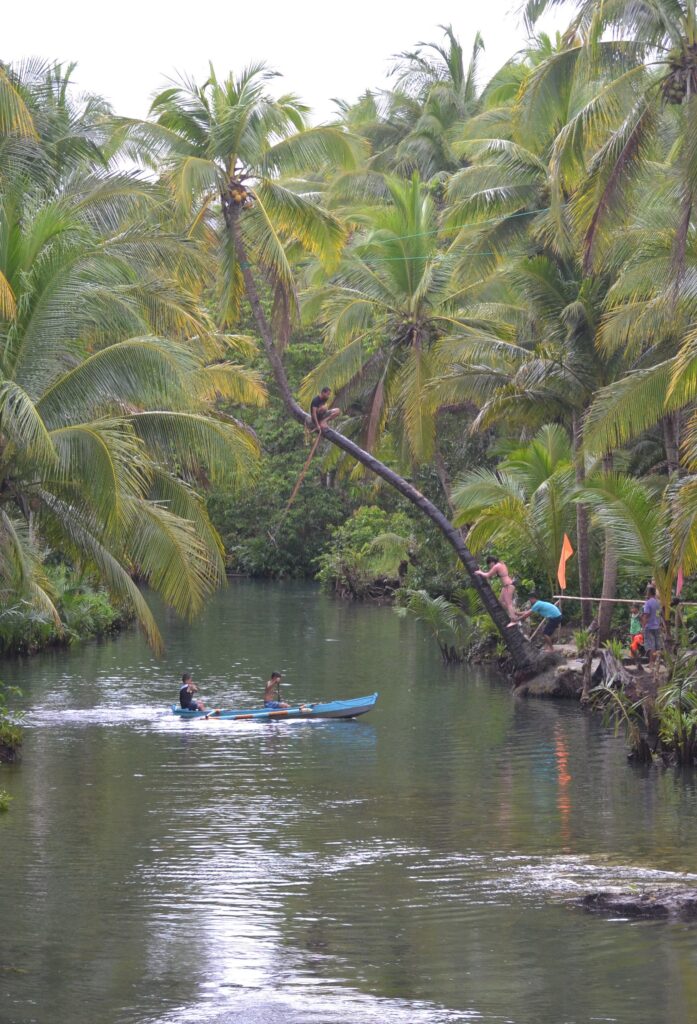Text and Photos by Henrylito D. Tacio
Additional Photos by Rhoy T. Cobilla

Asia’s top favorite island – that’s how the readers of Conde Nast Traveler magazine voted Siargao in Surigao del Sur. Garnering a score of 97.77, the raindrop-shaped island trounced Indonesia’s Raja Ampat Islands (second) and Bali (fourth) and Thailand’s Phi Phi Islands (ninth) and Phuket (tenth).
In 2018, the premium travel magazine also named Siargao as the world’s most beautiful island. It caught the attention of travellers from all over the globe and visitors have been flocking to the island since then.
It’s not difficult to understand why. This tiny haven – with a total land area of only 437 square kilometers – has world-class waves, white sand islands, aquamarine tide pools, and concealed lagoons. You can circumnavigate the whole island in less than a day.
When surfing created waves throughout the world in the 1970s, no one had heard of Siargao’s awesome waves. And it came to pass that surfing enthusiasts, going to Asia, got tired of returning to Bali, so they started looking for something more challenging.
Some surfers found that in Siargao in the late 1980s. But it wasn’t until in 1992, when well-known surf photographer John Callahan made a splash of to-die-for waves in an American surfer magazine, that the island finally created a stir.
In just a matter of months, surfers came one by one with the expectations of surfing the island’s perfect waves in Cloud 9. This right-breaking reef wave is the site of the annual Siargao Cup, a domestic and international surfing competition. As a result, Siargao has earned the sobriquet, Surfing Capital of the Philippines.
“Siargao has excellent surfing conditions, particularly during the southwest ‘habagat’ monsoon from August to November, when the prevailing wind is offshore,” said the website, siargaoislands.com.
In recent years, several people – mostly coming from other countries – visit the island even when there are no exciting waves. After all, there’s more to Siargao than just those breathtaking breakers.
Aside from Cloud 9, another popular spot is the Maasin River, located on the Siargao Circumferential Road. About 18 kilometers from General Luna, visitors swing and jump from the bent palm tree without having to worry about hitting the river’s bottom, which is only two meters deep.
Then, there’s the Magpupungko Lagoons and Rock Formations in Pilar. Don’t go here when the tide is high as you get to see only the lapping waves of the ocean. The best time to visit the area is during low tide, where natural pools (with depth ranging from a few inches to 15-20 feet) abound. Among shallow pools, you get the opportunity to watch tropical fish swimming. You can swim in pools that are deeper and wider.
Siargao has 48 islands and islets and most of them are worth your visit. In Bucas Grande, the 60-hectare Sohoton Cove National Park is a tranquil definition of paradise: the towering limestone hills are covered with tropical plants and hardwood trees. Below them are crystal-clear waters.
In one of these hills is Hagukan Cave, named after the sound of a human snore (“haguk”). To get inside, you have to swim and pass a narrow pathway leading to a luminescent pool whose water glows an electrifying green light.
If you happen to visit the national park during the months of July to August, try going to Tojoman Lagoon, a jellyfish sanctuary. Here you can have a close encounter with several species of stingless jellyfish, including the small brown-spotted jelly and vibrant blue-moon jelly.
Another fascinating place is the Sugba Lagoon located on Coab Island in Del Carmen. With a 5-meter and 10-meter diving board in the middle of an emerald-green lagoon, it’s an amazing spot to unwind yourself and get lost in the crowd. Among the activities you can do is kayaking.
In getting to Sugba Lagoon, you have to pass several kilometer-long mangrove forests. If you are interested, you can tour around the area in a boat and get a glimpse of its rich marine life, including salt water crocodile, marine turtles, and sea cows.
If snorkelling is your interest, some places between General Luna and Cloud 9 have excellent spots, particularly at Secret Beach east of Dapa and at Corregidor Island. If you haven’t brought snorkels, you can buy them at Corregidor Island.
Once you have done those activities, you may join a group that tours three nearby islands: Guyam, Naked, and Daku. Guyam is the smallest among the trio and you can walk around it for about 10 minutes. Naked is called such because there’s nothing you can find on the island but only white sand on it.
Daku, as its name suggests, is the biggest of the three islands and it is where visitors who do island hopping usually eat their lunch. It is known for its white sand, lush palm trees, and sparking blue water. While Guyam and Naked islands are uninhabited, there’s a small fishing community in Daku Island.
You can fly to Siargao directly from the main jump-off points: Manila, Cebu, and Davao. Or, you can fly to Surigao City and then travel via ferry to Siargao Island. There are daily fast craft trips from Surigao Port to Dapa, Siargao. Entry points include Eva Macapagal Passenger Terminal and Lipata Ferry Terminal. – ###




